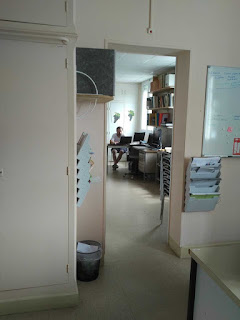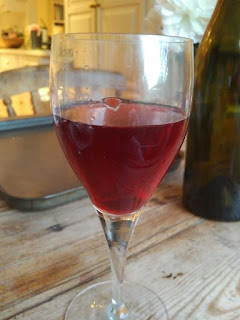On the island of Paros in the Cyclades there is a shocking level of promiscuity. This is no tittle-tattle. It has been going on for years and is officially sanctioned. How could this be?
Well, the typical grapes are Monemvassia (white) and Mandilaria (red). It was decided in the mists of time that since the Mandilaria of Paros is so deeply coloured and tannic it may be blended promiscuously* with as much as 80% Monemvassia to make red wine!
We've heard of a dash of Viognier in Rhone blends but this is surely unprecedented. Does it taste like red wine? Is it any good? The answer is a resounding 'yes,' especially when made by Moraitis, the best known producer on the island.
Monemvassia itself is a fascinating variety. At first, we assumed this was just another Malvasia which name is supposed to be a corruption of the name of the Greek port of Monemvasia from where Malvasia is supposed to have come. Monemvassia may also have come from Monemvasia but this Monemvassia is actually a separate historic variety not related to any Malvasia. It is mostly found on Paros with some plantings in the Peloponnese.
Moraitis make a monovarital Monemvassia as well as a range of other wines. We bought one of these and their Sillogi red.
Sillogi is Greek for Blend and it is this one that is apparently 66% Monemvassia and the rest Mandilaria.
The Moraitis Winery is situated near the seaside town of Naousa. This is confusing because there is a much more familiar Naousa (or Naoussa) in Macedonia on the eastern slopes of Mount Vermion, 92km west of Thessaloniki where Boutariand others make celebrated wine mainly from Xinomavro.
The vineyards of Paros, like so much else to do with Paros wine are individual with the vines grown so close to the ground as to look more like rootstocks.
Moraitis has a very handsome cellar and tasting room.
We're not sure why the bottles have to be kept under lock and key but visitors are given the freedom to roam around the spacious lower floor
where barrels slumber under the watchful eye of a Mrs Moraitis of old.
The winery is justly celebrated with numerous awards and well established distribution to the major world markets.
Pretty good for a vineous knocking shop!
*Promiscuity in wine has been defined as 'The act of blending multiple, mutually attractive grape varieties in an assortment of unorthodox combinations. Implies a wanton disregard for convention.'





















































